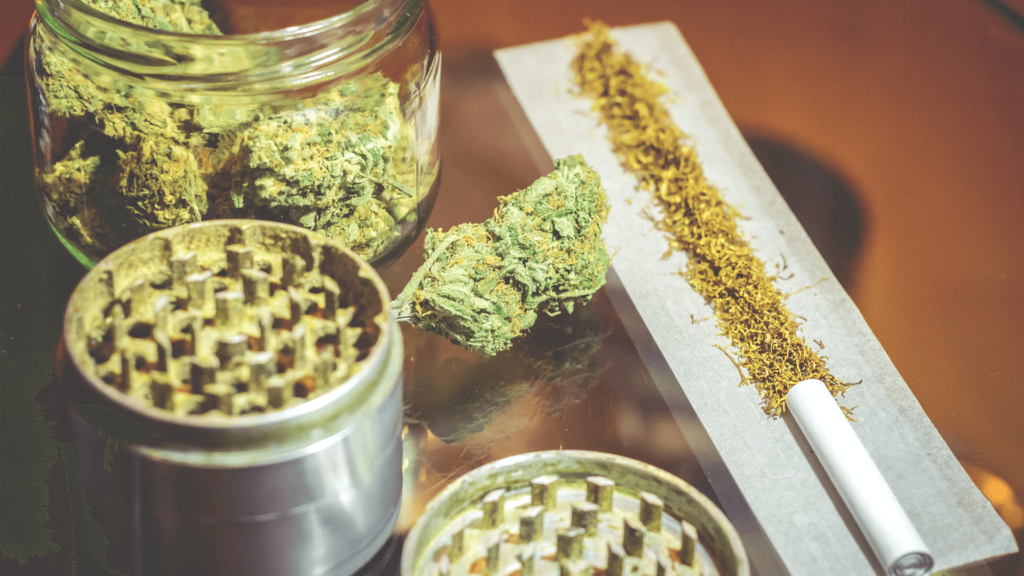Cannabis has been in use for centuries by people all over the world. In that time, it developed its fascinating subculture. And like any subculture that’s been around so long, it has its own lingo.
Are you new to the wonderful world of weed? You may find the various measurement terms confusing or unfamiliar to you as most of them are slang terms. So, what’s the difference between the different weed measurements, and why are these particular words used?
Wonder no more, our cannabis-loving friends. This short guide to the different weed measurements will teach you all you need to know. Get to know the right weed weights and their words, and you’ll always purchase your weed with confidence.

Technically, cannabis is measured in grams. But while this is a familiar unit of measurement across the pond, it’s not the norm in the US. That’s where much of the confusion comes in, as the US uses the imperial measurement system.
A gram is a metric measurement – the measurement system used across most of the world. Most of the world uses this International System of Units (SI). Based on factors of ten, it makes conversions between different units of measurement easier.
The math is just easier to calculate, and it allows an international understanding of cannabis weights. So, to better understand what you’re getting when buying in grams, you must know how it relates to your measurement system.
Unfortunately, this is where it gets a bit tricky. One ounce in weight is equal to 28.3495 grams. To simplify matters, we could say it’s just under 28,35 grams. Many cannabis suppliers will round it off and say an ounce equals 28 grams.
Just when you’ve wrapped your mind around the metric system, you come face to face with other terminology. An example is the word ‘mota,’ a Spanish slang term used to describe a tiny amount of weed.
When buying cannabis, it helps to know the ‘code,’ so let’s take a look at these popular words.
Take note that some common weed measurements are used among unregulated cannabis suppliers. Many of these terms are therefore tied to street pricing structures. The below examples are not an indication of what you’ll pay per weight at authorized dispensaries like Embarc.
Weed is typically measured in grams. We’ve covered that the gram is the international standard for measuring weed’s weight. And we’ve looked at why the gram is commonly used for weed. But why should you buy a gram?
A gram of weed is usually enough for around three smaller joints or maybe one blunt. A gram is also usually the smallest amount of weed sold in cannabis dispensaries.
When it comes to buying cannabis concentrates, most of them are quite potent and therefore are not generally on the street in quantities of more than one gram. If you’re a dabbing fan, you’ll probably get between 15 to 20 dabs per gram of concentrate.
A nickel bag or a ‘nick’ is another slang word you may have heard when referring to weed purchases on the streets. The word nickel is meant to denote ‘5’, so If you only have $5 to spend on your herb, just ask for a nick.
A nickel bag contains a tiny amount of weed, roughly a quarter of a gram.
Some weed slang words are used to indicate pricing on the street rather than weight. So a dime bag of weed, dime meaning ten, will set you back about $10.
The actual weight of the contents will vary, depending on pricing structures in your region at the time.
Although there is no exact weight requirement for a dime bag, it usually contains about 0.5 grams to 1 gram of weed.
Once again, this term refers to pricing rather than to weight. A dub sack is $20 worth of weed, so if that’s what you are prepared to spend, you ask for a dub.
A dub contains between 1 gram and 1,5 grams of weed. The exact amount favored by weed dealers will vary.
Are you finding the grams, nicks, dimes, and dubs too complicated? Many cannabis dispensaries in the US stick to imperial measurements like ounces (oz) to make buying weed in familiar weights easier.
An ounce of weed is commonly called an ‘O’ or an ‘Ozz.’ Older users may refer to an ounce of weed as a ‘zip’ or even as a ‘lid,’ everyday slang for weed in the 70s.
As a rough comparison of grams to ounces, there are just over 28 grams in an ounce. This is sufficient to make yourself about 56 small joints.
If you buy 4 ounces, equivalent to a quarter of a pound in weight (16oz to a lb), it can also be called a quarter pounder. The ‘quarter pounder’ is sometimes shortened to a ‘quap.’
You can expect to pay up to $250 for a half-ounce of cannabis. A half-ounce is often colloquially referred to just as a ‘half.’
A half-ounce of weed is equal to about 14 grams. You’ll be able to roll about 28 small joints from a half-ounce of weed.
A quarter ounce of weed from a legal dispensary will cost you between $80 and $150, depending on the supplier and the quality of the cannabis. A quarter ounce is sometimes called a ‘quad.’
A quarter ounce of weed is equal to about 7 grams. You can make about fourteen small joints from a quarter-ounce of weed.
An eighth of an ounce of weed will generally cost you anywhere from $35 to $70. Once again, this depends on the supplier and the quality.
Fun fact – an eighth is also sometimes referred to as a “KD.” This refers to the number 35 jersey originally worn by NBA legend Kevin Durant.
An eighth of an ounce of weed is equal to about 3.5 grams, and it’s a very popular quantity for personal use. You can make about seven small joints from an eighth of an ounce of weed.
Nugs are the manicured buds of the cannabis plant, the smokable colas. The word ‘nugs’ is also sometimes used to describe high-quality cannabis buds. So when people refer to nugs, they mean that they are marijuana buds that are good quality.
One bud equals one nug. The word ‘nug’ is most likely a shortened form of the word ‘nugget,’ meaning a small lump or chunk, usually of something precious.
It’s unclear when this word started being used to refer to marijuana buds but has been used for years in the subculture and even in popular songs.
A schwag, on the other hand, refers to cheap, low-grade marijuana of inferior quality. This is often a mass-production product grown in less than favorable growing conditions. So nug vs. schwag means good vs. bad quality weed.
Because it’s usually less potent and not great for smoking, it’s best used for edibles. As for the meaning of ‘schwag,’ it’s related to the word ‘swag,’ which is used for free, promotional items given away at fairs. This implies that the weed is cheaply produced and of such poor quality you wouldn’t want to pay for it.
A scale is used to measure the weight of weed. Weed stockists, whether regulated or unregulated, will typically use this method. This can be a mechanical or electronic scale, although electronic ones are more accurate and easier to read.
Want to measure your home-grown stash but don’t have a scale handy? No problem! There is just one of the fun DIY solutions to this problem – the hanger method. However, we cannot guarantee accurate results.
Cut your string into three equal parts, then tie one piece on each side of the hanger. Take the third string and tie it precisely in the center, using it to suspend a moderately heavy object like a mug, phone charger, or stone to serve as a stabilizer.
Use a ruler to make sure the strings on either end of the hanger are both the same distance away from the center string. Then attach the containers to the strings at both ends.
Place the known weights inside these containers. Check to see if the hanger is balanced, meaning both ends weigh the same rather than the hanger tipping more to one side. If it’s balanced, then remove one of the weights and substitute it with a quantity of weed.
When the hanger is balanced once more, you can assume that the weight of your weed is roughly equal to that of the known weight.
One of the most common questions we get about weed measurements is the pricing variation. Indeed, the price of weed on the street will often be cheaper than from legal dispensaries. But there’s a good reason for it.
Legal weed pricing factors in lab testing, state licensing, and regulatory compliance costs. It makes legal weed a safer choice because you know exactly what you’re getting. If you’re using marijuana for medical reasons, you want to know what you’re putting into your body is high quality and safe to use.
There will always be unregulated weed sale and use. This does not necessarily mean that the product you buy will be harmful. However, the measurements of black market weed are seldom accurate, and the quality may be far less than that of legal weed.
So, although it can be cheaper to buy weed this way, there’s always a reason for it. Don’t forget that with weed, as with anything else, you get what you pay for. Be aware that you might not always be getting the great deal that you think you are.
Whether you buy your weed from regulated cannabis dispensaries or unregulated weed dealers, the terminology for the measurements is often the same. However, on the street, you may hear and use words that refer more to pricing than to actual weight.
Because it’s hard to trust the quality (and quantity) of street weed, it’s best to grow your own or buy from reputable cannabis stockists like Embarc. We have all the top-quality cannabis products and paraphernalia you need for a rewarding weed experience.
